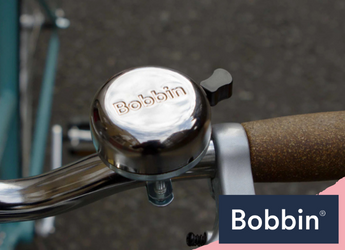Cycle Safety: How Bike Bells Can Keep You Safe on the Road
What is this safety device mounted on a bike for warning pedestrians and other cyclists? Ding dong — bike bells!
Wearing helmets is a top priority for cyclists when it comes to safety requirements. Equipping the bicycles with bike bells is another rule under the Highway Code. So, if your two wheels don’t have a bell yet, it’s time to step your road visibility by getting one.
Why Are Bike Bells Necessary?
Bike bells are a safety measure to help avoid accidents on the road, hence their importance. You’re alerting pedestrians and other road users and vehicles that you’re there with a ding-dong. This could be a fellow cyclist, someone walking, or drivers sharing your route. And remember, ringing your bell is a more courteous way than shouting at someone.
The Pros and Cons of Bike Bells
As with everything else, having a bicycle bell has its perks and quirks. But most favour the good side, starting with:
1. Safety

The number one priority of bike bells is to enhance cyclists’ safety, especially when riding on narrow roads. Sharp turns, in particular, are the most critical places and often the causes of bike crashes.
Visibility is limited, and you might not see if someone is coming from the opposite direction. By ringing your bell before making the turn, you alert any oncoming pedestrians or cyclists to your presence and prevent potential collisions.
2. Reduced risk of collision
Safety also means reduced risk of collision, especially in an urban environment. Warning people you’re approaching can give them enough time to get out of your way.
3. Convenient for cyclists (including you)

Not only does a classic ‘ding dong bell’ help you stay safe on the roads, but it can also be quite convenient for cyclists. You can skip the yelling part or use hand gestures every time you want someone else on the street to move — all you have to do is press the bell.
4. Courtesy to others
Having a bell is beneficial when riding alongside other cyclists. By politely using the bell, both parties can ride safely. It’s also courteous to ring the bell to alert pedestrians who might be walking into danger or could get caught in your path. Again, giving them a heads-up can prevent accidents before they happen.
A few quirks
Bike bells do have some disadvantages, too. But they don’t affect their functionality and purpose, including:
- Placement: In most cases, you have to change your grip to sound the bell. This may slow the reaction time, and the ding-dong sound may be ignored. What you can do is ensure your ‘trigger bell’ is well-fitted on the handlebars. Check the handlebar diameter to choose the most suitable bell for your bike.
- It can be easily ignored: Pedestrians’ cluelessness and drivers’ lack of attention can make these bells useless. But this shouldn’t stop you from having one. You tried warning them, and you did your part. Who knows? Someone nearby would hear the ringing instead, alerting other road users.
Round-up
You have to ding dong your way if you want to step up your visibility on the road. Installing one in the bar space of your bike’s handle can improve safety and courtesy on roads & trails alike. Overall, a good quality bike bell can make a difference in your cycling life and experience. Whether the main purpose is safety reasons or just simply convenience.
Pair your bell with these bike accessories for safety enhancement and aesthetics! Should you have any questions, feel free to contact us.
Next on your reading list: What Bike Accessories Do I Need?









